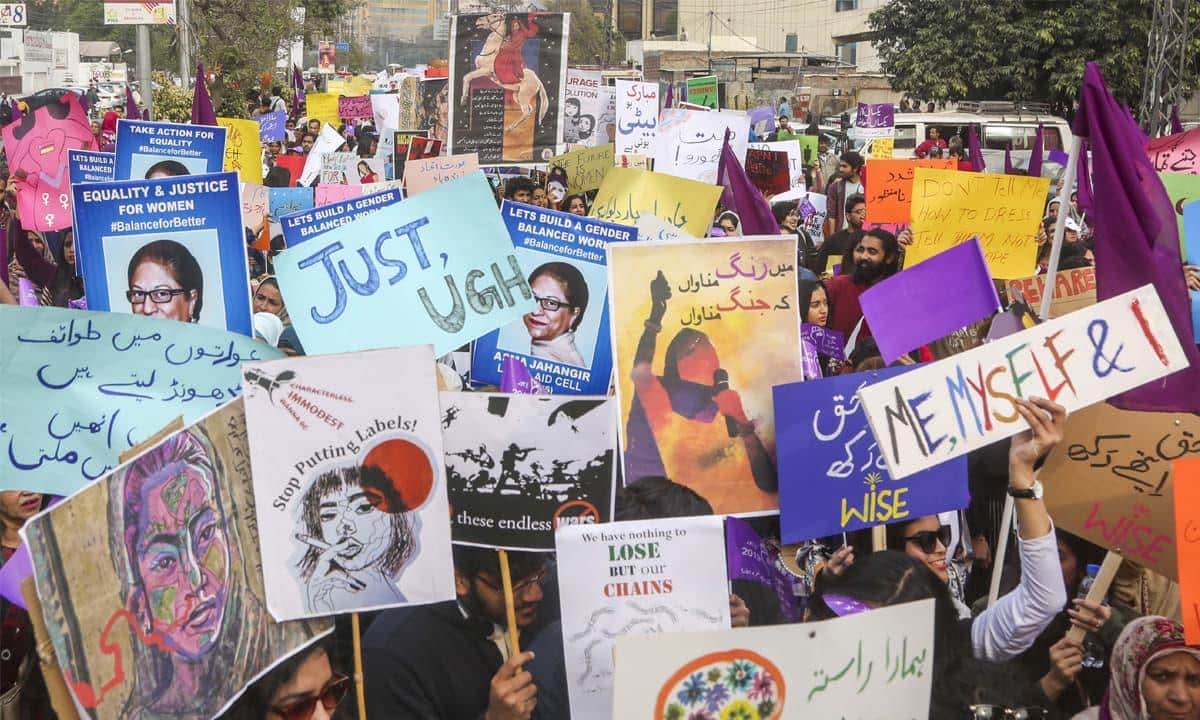
by Rubeena Slamat, Piet Bracke, Melissa Ceuterick
BMC Women’s Health 24, Article No. 676, 31 December 2024 Open access
The Aurat March, 2019, Aun Jafri, White Star
Abstract
Abortion is taboo in Pakistani society, and it is stigmatised throughout the country, regardless of legal permission. Despite the burdens imposed by social norms of pronatalism and motherhood, women do exercise agency to have abortions. This study explores the experiences of women who have had induced abortions and maintained their social status within the community. Goffman’s dramaturgical theory (frontstage and backstage behaviours) is applied in order to document these experiences. Data were collected through 38 in-depth interviews and six focus group discussions. The results are presented according to a grounded theory approach. The results of this study indicate that women exercise agency and stage abortions as miscarriages, which are culturally more acceptable. They do this with the help of support systems comprising family members and friends. They are able to maintain their social status by navigating between what Goffman refers to as the frontstage and backstage regions of their lives. In this study, these regions are not defined by physical boundaries, but by the presence of participants and audience. Women must therefore take care to behave appropriately, especially in the frontstage region. Even when women do opt for abortion, the experience is likely to result in the psychological burden of a lifelong memory.
From the Conclusion
Our study demonstrates that social pressure and the desire to avoid stigma can lead women to undergo abortion in secret. In Pakistan, clandestine abortions are the cause of substantial levels of maternal mortality and morbidity, and many women experience a wide range of physical issues, including infection and haemorrhage. It is therefore important to discuss this topic at the societal level. The results of this study should encourage influential figures to come forward and play a role in addressing the root cause of the stigma surrounding abortion. For example, the relevant department should work to decrease the incidence of unintended pregnancies. Similarly, the health department should develop standards for professional practice based on clear information regarding abortions laws (both legal and religious).
At the community level, debate and discussion could make a positive contribution to the destigmatisation of abortion. At present, such discussion and communication are restricted by taboos surrounding this topic. Initiating the discussion and reducing the gap in communication could lead to the dissemination of useful information that could help to avoid harmful results.
One important strength of this study is that it considers the experiences of women with regard to abortion by examining the ways in which they manage social status and psychological burden within a community in which abortion is stigmatised. The results of our study further reveal that women risk their physical and psychological health by undergoing induced abortion. It also points out that, although women do exercise agency to taking such decisions, they are likely to feel guilt throughout the rest of their lives.



